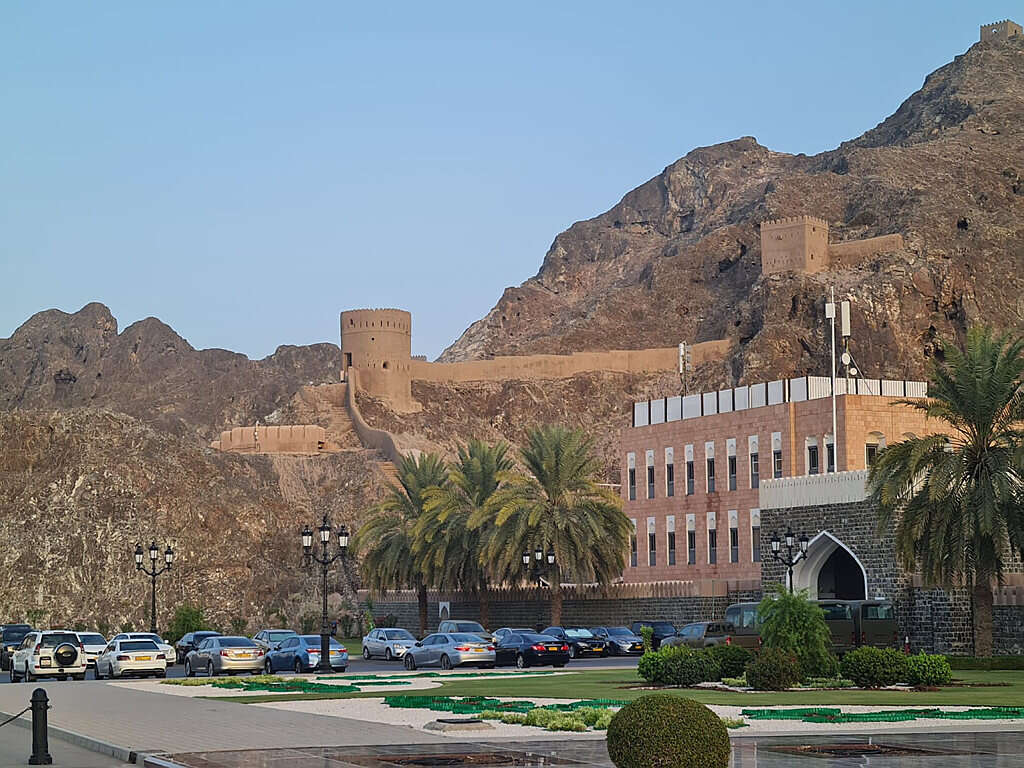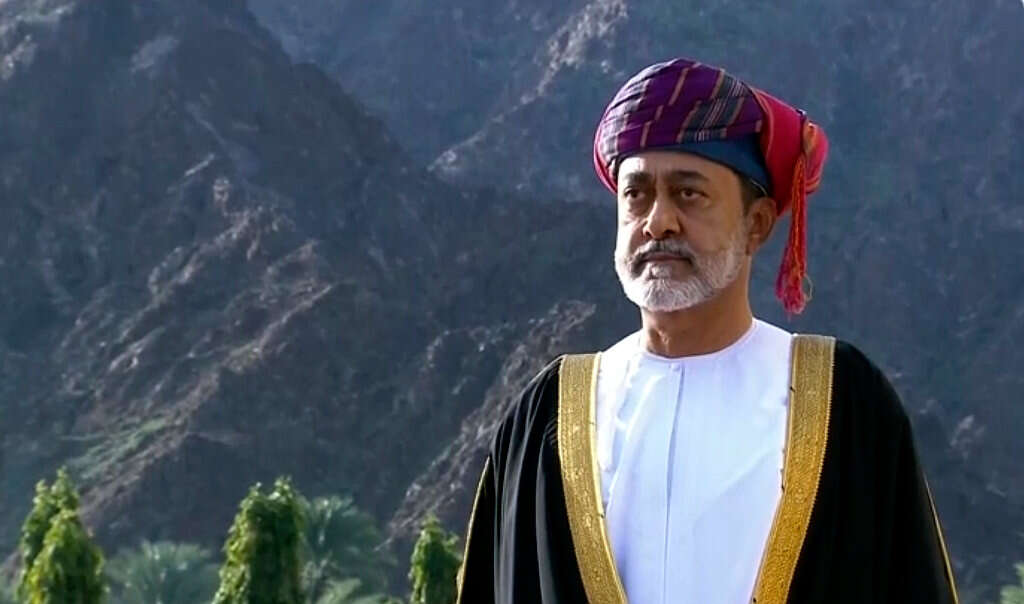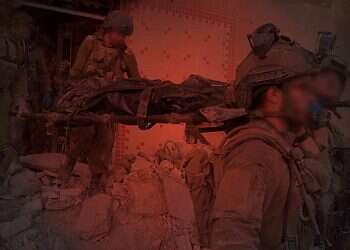MUSCAT, Oman -
On the last day of our visit to Oman, we decided we should eat at one of the more high-end restaurants in Muscat, near the marvelous opera house. It got raving reviews, so we figured we should check it out. We asked the driver who had been with us all through the visit whether he would like to join. As the locals generally do, he replied with low-key modesty, "Only if this is ok with you." And without missing a beat we said, "Of course." After all, this driver went above and beyond what he had to during our brief tour, showing us what only the locals know about the place. So apart from giving him a generous tip, it was a no-brainer that he would join us for our last festive meal.
Follow Israel Hayom on Facebook, Twitter, and Instagram
At some point during our chat with the driver, we decided to challenge him by asking if he had ever wondered where we are from, having listened to us speak all this time in a language he could not understand. He smiled and replied, "I know where you are from." We asked if he had ever met Israelis and he said that he had indeed, once before, but also added that he met Israelis in India and Thailand. We promised that we would recommend his services to anyone we meet who planned to visit Oman and he thanked us. "I wish I could come and visit Israel," he said."
That driver, whom we met just by happenstance after ordering a taxi, captures the essence of this surprising country: friendly, welcoming, intelligent, and calm. In fact, very calm. In that sense – but not just in that sense – Oman is very different than the rest of the Middle East. You won't hear people shout or swear or honk. Everything is calm and everyone is courteous.
This is perhaps why the sultanate doesn't usually grab the media spotlight. Compared to its flashy neighbors the UAE and Qatar, Omar is more modest. But underneath this veneer, there lies a country that is definitely worth a visit – perhaps more so than any other Gulf destination.
A strategic location
Oman lies on the eastern part of the Persian Gulf. In fact, it is the easternmost Arab country and shares a border with the UAE in the north; Yemen in the south; and Saudi Arabia in the west. Across from the Gulf of Oman lies Iran. It has also been influenced to a large degree by India and Pakistan and by the legacy left behind by the British, whose decades-old rule ended in full only in 1971. It belongs to the Gulf Cooperation Council alongside Saudi Arabia, the UAE, Qatar, Bahrain, and Kuwait, but unlike those countries, it espouses neutrality. That's why it refused to join the Saudi-led coalition to fight the Houthi rebels in Yemen. This allowed it to enjoy a peaceful border on that flank.

This is also why Oman has not joined the Abraham Accords, and probably won't do so in the foreseeable future. However, beneath the surface, it has maintained good relations with Israel, which have been managed by Mossad. Efraim Halevy, who was Mossad director, told Israel Hayom that he visited the sultanate for the first time in 1974. Since then, the Mossad chiefs have visited this place quite often, but not only them. Yitzhak Rabin, Shimon Peres, and Benjamin Netanyahu all visited Oman as prime ministers. Various cabinet ministers and government officials also visited Muscat when Israeli-Arab relations flourished (such as during the heyday of the Oslo Accords), but also when things turned south in the region.
Recently the two countries have seen an uptick in cross-border engagements. Part of this is because Israel has been courting Oman to allow Israeli airliners unrestricted access to its airspace en route to the east. Jerusalem was taken aback by the Omani refusal despite Saudi Arabia giving a green light in July during President Joe Biden's visit. Notwithstanding this road bump, policymakers believe that this matter will be resolved in due course, perhaps even before Israelis travel en masse to various destinations during the High Holy Days.
It is also safe to assume that there are pressures applied by those who oppose this easing of restrictions, primarily by Iran. Iran has significant clout in the region, despite the religious gulf between the Arab states (Oman is Sunni, Iran is Shiite). When Iran engaged in covert nuclear talks in 2015 over the nuclear deal, they did so in Muscat under the auspices of the sultanate's hosts. This was made possible mostly because of the Omani neutrality that, as far as Iran is concerned, is different than the hostility exhibited by Saudi Arabia, Bahrain, and the UAE.
The lack of official ties between the countries has prevented Israelis from visiting the state as regular tourists. Only those who hold a foreign passport can visit, and that is too bad because the sultanate is one big surprise: Oman offers tourists a combination of western urban towns alongside an outback whose nature runs wild. It has high-end hotels and great food. For Israelis who seek an exotic vacation, booking a vacation in Oman should be a no-brainer once it becomes a viable option.
Muscat, the capital, is in the northern part of the country. Many of the tourists there arrive by car from the UAE, and others by air. Tourist season is mainly in the winter when things cool down a bit from the high 70s you have during the summer months (along with prohibitive humidity). Because of the heat, many establishment owners close their premises starting midday, take a siesta and then come back to work in the afternoon. Some have air conditioning and even the local open-air market has cooling systems that make it possible for tourists to browse the stands and for the merchants to make a living.
That market is one of the main attractions in the city. It has everything you could want, but its specialty is frankincense, whose aroma is very popular among the locals. It comes in the form of small rocks that get lit and then spread their scent. Those who want traditional souvenirs can buy the curved daggers that men carry on their belts, which are also part of the national flag, the hats worn by practically all men, and the traditional jalabiyya garments that cover men and women from head to toe (white for the former, black for the latter). You can also find leather products, dates, and sesame confectionery known as halwa. But unlike the halwa we know from Israel, the Omani version resembles Turkish delight and it is very sweet - it is served on small plates with dessert, along with tea or coffee (even the coffee here is different: Like other Gulf nations, it is much lighter).

Omani food is a twist on your traditional Middle Eastern or Arab dishes. Hummus has a different texture and taste - much more subtle, almost like yogurt. The food is based mostly on sheep and camel meat. It is served alongside rice and the like. The strong spices are influenced to a large degree by Asian cuisine, but there are also unique flavors. The flagship dish is shuwa meat – which is mutton marinated in Omani spices, then wrapped in banana leaves or palm leaves and put in an underground sand oven for a protracted period of several days. Fish is also popular here: Oman's relatively easy access to seawater made it a major exporter of fish and seafood.
Oman provides much of its domestic consumption on its own, especially when it comes to fruit and vegetables. Its economy is heavily based on oil and over the past two decades, it has also been fueled by natural gas. Much of the wealth it accumulates goes back to the people: The main motorway from the capital to the southern city of Salalah on the Yemeni border - which is about 620 miles - was built as a toll road by a Chinese company but it was eventually transferred to government ownership and is now charge-free. It is very impressive, in part because it has lights all along and is very well kept.
In fact, high-end maintenance is a constant feature in Oman. The uniformity of the homes – low-leveled and light-colored – could give you the wrongful first impression that they are decrepit, but the truth is that this is designed to preserve the conservative character of the place to avoid an eye-popping display of wealth. For the same reason, you won't find skyscrapers in Oman or highrises. Homes are relatively new and the infrastructure is the most advanced – from the watering systems to the drip irrigation (including in far-flung villages). This is also the case with communication systems (there is cellular coverage practically everywhere, including in the desert and mountain areas). When we tried to pay with cash in one of the villages in order to visit a local castle, we were told that we could only pay by credit card, despite the ticket price being just two dollars.
Oman is dotted with castles and fortresses from the time it was ruled by the Portugees (who were later kicked out by the Ottomans in the 17th century). Muscat's coastline has castles, including some that lie right next to the Sultan's palace. The palace is located on the sea, with red-colored cannons at its coast-facing back to protect the ruler. The entrance to the palace is only through the front. The building itself is very much like Oman as a whole – projects modesty but also cleanliness, both in architecture and physical features. Just like other Gulf states, Oman has used its wealth to attract many foreign workers, who take up a variety of jobs mainly in the services industry. But unlike the UAE or Qatar, where you would normally only encounter foreigners, in Oman, the locals work in every sector. That's why the ratio of locals to foreigners is different than its neighbors. It has about 2.5 million citizens and a similar number of foreign residents.
The Islam practiced here is very different. The country is conservative and religious but in moderation. You see mosques everywhere - don't miss the splendor of the Sultan Qaboos Grand Mosque in the capital with its massive carpets, wood engravings, and impressive chandelier. The sultan often arrives for the Friday service - but the country is not run by religious institutions; they only complement the state institutions. Alcohol, for example, is prohibited in public and you won't find it in stores and restaurants on the street front, but you can definitely drink in hotel lobbies which are frequented by many locals as well. The relatively few restrictions are also evident in how Omani authorities treat women: They can join the workforce and get a driver's license, and they can go out to party and attend college. Oman has invested heavily in education: You don't have to pay anything from kindergarten until you graduate from university. Those who excel can get scholarships for advanced degrees at prestigious institutions abroad.
The sense of personal security here is exceptional. You almost never see a police officer but the locals follow the rules, from maintaining cleanliness to proper driving. They don't go over the speed limit or honk and you rarely see some traffic violations. Our guide told us that the police usually crack down primarily on those who use their cellphone while driving or those who have not buckled up, as well as on drunk drivers. Those who get caught get fined about $20. If you are caught three times, your license is revoked on the spot.
Gas is very cheap because it's produced from Oman's own natural resources. Our guide complained that the price was higher than normal because of the war in Ukraine, causing the price at the pump to double. Groceries shopping is also very cheap, as are meals at restaurants. Although you can definitely find high-end dining – as you would see in a hotel – the majority of restaurants are very affordable. At Rozna, which is located inside a castle-like structure, a couple can get soups, appetizers, main courses, desserts, and drinks for a total of $30.
A 5-star desert
Muscat is very welcoming, but the real deal is what is just outside it. Nature in Oman is unique. Although desert comprises 85% of the country, some 15% are mountainous. One of the main tourist attractions is Wadi Shab, with its many oases, situated some two hours from the capital (and another 40 minutes hike in each direction on a trail replete with tropical flora including mango, papaya, banana, and of course dates and lime). The way to reach the wadi is also full of various landmarks and all are very well kept and organized: easy parking, clean toilets, and clear signage in both Arabic and English. This is a 5-star desert.
Another popular destination in Oman is just southwest of the capital: Nizwa. In its center, there is a big castle called Nizwa Fort. It has a large marketplace – the Nizwa Souk – where the main attraction is the livestock market where people flock to every morning to sell their sheep and camels and buy other animals. There is also a fish market nearby and a halwa factory that some say is one of the sultan's favorite places.
On the way to Nizwa, you can stop at a place called Bahla, which is a UNESCO World Heritage Site because of the hundreds-year-old wall surrounding it, spanning more than 12 km (15 miles). There are also quite a lot of picturesque villages dotting the mountains, with residents getting their livelihood mainly from tourism. Each village has easily accessible hiking trails with signs and comfortable access routes, including some that involve more extreme sports, such as rappelling and rock climbing, or trails that go along waterfalls and natural lagoons. All villages have small hostels with coffee shops with a great view of the mountains, capturing the history of every waterfall, stream, and plant for hundreds of years. In fact, Oman has a rich history due to its strategic location, but also because of outer space. It turns out that a lot of the meteorites that hit the earth ended up in the sultanate, making it a mecca for meteoriticists.
Most of the tourists we encountered were actually foreign workers. The guide told us that during the winter months the number of tourists from overseas grows, mainly tourists from Europe who want to escape the cold. The local airline, Oman Air, flies to major destinations in Europe, as well as to various locations in east Asia, India, and Pakistan, but mainly to the Middle East: Egypt, Jordan, and of course, the Gulf states. Tickets are rather affordable, as are the hotels. Oman, being a rather inexpensive country, uses the Omani Rial as the official currency (1 Omani Rial equals $2.60), but only in notes; no coins. The notes range from 1 to 50 rial. There are also notes for the subunits of the rial, Baisas. All of the notes bear the image of the sultan, Haitham bin Tariq. Murals of him and his predecessor, Qaboos bin Said, are everywhere in Oman.

Qaboos ousted his father in 1970 and made Oman into what it is today: Arab and conservative, but also open and accepting, and most importantly: very friendly. This is clear wherever you go, and with everyone, you speak to. When we stopped at the marketplace to ask for help in explaining to our guide where we are so he could pick us up, the local just asked us if he could talk with the guide and explain to him where we were. He explained this with great patience and offered to wait with us until the driver arrived.
The current sultan, who replaced Qaboos when he died in 2019, has continued in his footsteps, maintaining good relations with the rest of the world. As far as Israel is concerned, this means that the two countries are likely to maintain their low-key bilateral ties, and the issue of overflight rights will likely be resolved eventually (perhaps through US intervention). However, the two countries are unlikely to upgrade relations beyond that. Israelis who want to visit this regional gem will have to wait, although if you have a foreign passport, do not hesitate: Oman is a fascinating and surprising country in every imaginable way. It is not the typical Arab Middle Eastern country, and it gives us all hope that the region could look a lot different one day.
Subscribe to Israel Hayom's daily newsletter and never miss our top stories!




